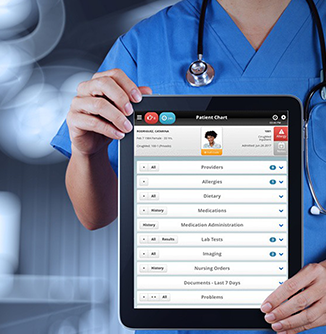THREE TARGET AUDIENCES OF HOSPITAL MANAGEMENT SYSTEMS In order to create a versatile, efficient and convenient system, developers must fully comprehend its future functions, users and supposed benefits. Only after this step, they will be able to plan and coordinate their efforts, choose the most appropriate technologies, anticipate potential problems and come up with the solutions. A hospital information management system, as its name suggests, is a complex software suite of interconnected program modules that serve to provide both information and management capabilities to a large variety of users.
The supposed users of a hospital management system may be generally divided into three categories:
Hospital administration
Doctors and other authorized employees
Patients.
Each category should have a separate set of rules for clearance and restrictions within the system. This set depends on a user’s role and varies from unrestricted access granted to the highest administration members, to limited access to a certain portion of information for patients. For example, a doctor should have access to his patients’ medical data, but should not be allowed to get information on other doctor’s patients without permission. Every user should have a unique identifier, which associates the person with that person’s rank in the system. User with higher ranks and more permissions within the system may need additional means of authorization. Such authorization means may include, among others, a fingerprint of face scan, a keycard, a USB dongle, or voice authorization.
KEY FEATURES OF A HOSPITAL MANAGEMENT SYSTEM
Software developers should realize that a hospital management system is required to provide a diverse array of highly specific features and functions, some of which are not used in other industries.
Management-oriented features:
Doctor timetables and scheduled appointments. Allows doctors to plan and browse their timetables. Also allows sharing such information with patients in order to make an appointment. Pharmacy monitoring, management and information module. Provides data regarding drugs and supplies currently in stock and allows ordering them in advance.
Operation room availability schedule and management.
Food management for patients’ diets and hospital cafeteria. Ward management. Provides various types of planning, tracking and performance reports separately for every single ward. Supplies inventory monitoring and purchase management. Deals with any consumables that do not belong to the pharmacy. Also includes fuel tracking for ambulances.
Utilities expenditures, water, electricity consumption.
Laundry management.
As you can see, this group of features will be invaluable for the hospital administration, as it helps to optimize work, coordinate current resources and employees, and increase profits.


